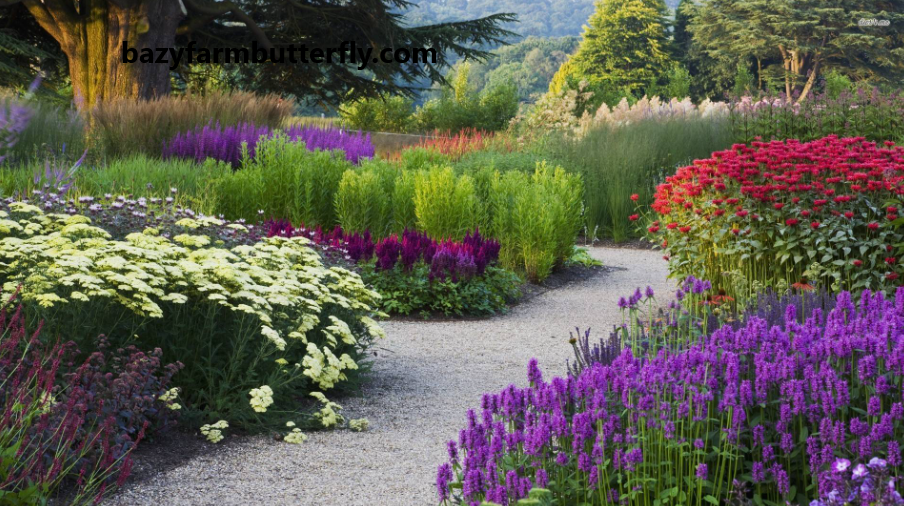Gardening is an excellent hobby that brings a sense of peace and tranquility to our busy lives. It also provides us with fresh produce, beautiful flowers, and a connection to nature. However, it can be challenging to choose the right plants that thrive in your area. This is where the concept of gardening zones comes in. In this article, we (Bazy Farm) will explore the question, “What is my gardening zone” and how it can help you select plants that are perfect for your region.
What is My Gardening Zone?

Your gardening zone is determined by the USDA Plant Hardiness Zone Map, which divides North America into 11 zones based on the average annual minimum temperature. Each zone is separated by a 10-degree Fahrenheit difference in the average minimum temperature. The zones range from 1a (the coldest) to 13b (the warmest). Knowing your gardening zone is crucial because it helps you choose plants that will survive and thrive in your region.
How to Determine Your Plant, Hardiness Zone
To determine your gardening zone, you can use the USDA Plant Hardiness Zone Map, which is based on the average annual minimum winter temperature for each region. The map is divided into thirteen 10ºF zones, which are further divided into sub-zones of 5°F. You can find your gardening zone by entering your zip code or state into the USDA’s interactive map.
You can also find your gardening zone on plant tags or online when purchasing plants. Most plants that you buy are marked with a hardiness zone number. The label will identify the zones in the U.S. where the plant can thrive.
Importance of Plant Hardiness Zones
Plant hardiness zones are important because they help gardeners and growers select plants that are most likely to thrive in their region. Most plants that you buy are marked with a hardiness zone number, which identifies the zones in the U.S. where the plant can thrive. Choosing plants that are adapted to your zone can increase your chances of successful gardening, reduce plant stress and susceptibility to diseases, and save you time and money in the long run.
Factors that Affect Your Gardening Zone:

While the USDA Plant Hardiness Zone Map is an excellent tool for determining your gardening zone, other factors can affect plant growth and survival in your region. These factors include:
- Soil type and quality
- Sun exposure
- Rainfall
- Wind patterns
- Elevation
- Microclimates
Understanding these factors can help you choose plants that are better suited for your specific location.
Tips for Gardening in Your Zone:
Once you know your gardening zone, it’s essential to choose plants that are well-suited for your area. Here are some tips for gardening in your zone:
Choose Plants that Thrive in Your Zone:
Plants that are well-suited for your gardening zone will have a better chance of survival and growth. You can find plants that are ideal for your zone by checking the plant tags at your local nursery or doing research online.
Pay Attention to Sun Exposure:
Some plants require full sun, while others prefer shade or partial shade. Make sure you choose plants that are appropriate for the amount of sun exposure in your area.
Consider Soil Quality:
Soil quality can vary greatly from one location to another. Make sure you choose plants that are compatible with the soil in your area. If your soil is poor, you may need to amend it with organic matter to improve its quality.
Water Appropriately:
Different plants have different water requirements. Make sure you choose plants that are appropriate for the amount of rainfall in your area. If you live in a dry region, you may need to water your plants more frequently.
Protect Your Plants from the Elements:
Extreme weather conditions can damage or kill plants. Make sure you protect your plants from frost, high winds, and heavy rainfall by covering them with protective materials or bringing them indoors.
How to Use Your Gardening Zone

Once you have determined your gardening zone, you can use that information to select the right plants for your garden. It’s important to choose plants that are suitable for your zone to ensure that they will survive and thrive in your garden.
When selecting plants, look for their hardiness zone on plant tags or online. Because the zone number increases the further south you go, choose plants that are your zone and lower. For example, if you live in Zone 6, choose plants that are winter-hardy to Zones 6, 5, 4, 3, and 2. Keep in mind that plants that can handle Zone 2 winter cold may not tolerate the summer heat in Zone 6, so it’s important to consider other factors like sunlight and soil type as well.
Conclusion
Understanding your plant hardiness zone is essential for successful gardening. By selecting plants that are adapted to your local climate and soil conditions, you can increase your chances of success and reduce plant stress and susceptibility to diseases. Use online resources like the USDA plant hardiness zone map or consult with local gardening experts for advice on selecting and caring for plants in your zone.

